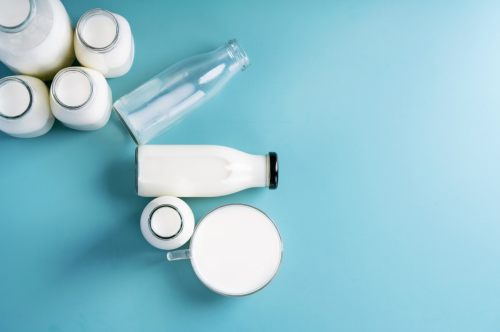
SA dairy trends: Covid-19 pandemic shifts consumer demand
The Covid-19 pandemic has resulted both in shifts in consumer demand for dairy products as well as changed consumer purchase habits with fewer customers in-store and consumers favouring garage forecourts given their convenience. As a result, garage forecourts have adjusted their product mix to ensure a more balanced offering between immediate consumption and future consumption pack alternatives.
BMi Research reveals that the local dairy market weathered these shifts in dairy products relatively well. The biggest winner in these consumer shifts was the buttermilk and maas category which recorded volume growth in 2020 compared to 2019. Unfortunately, it was the only value-added dairy category which recorded volume growth during the year.
The reason for this is that both buttermilk and maas are viewed as affordable and healthy beverage alternatives, consumed with meals, to which consumers migrate during tougher economic times. This was particularly evident given that volumes of larger and more affordable pack sizes grew, with garage forecourts and bottom end retailers showing the most prominent volume growth as a result of their convenience relative to other larger outlets.
Despite the popularity of buttermilk and maas, particularly amongst middle to lower end consumers, it is expected that volumes of both products will remain fairly static this year. Inevitable price increases as a result of growing input costs are expected to lead to some degree of resistance from consumers.
Other dairy beverages were not as fortunate with volumes of drinking yoghurt, spoonable yoghurt and dairy juice blends all declining in 2020 compared to 2019 largely as a result of a depressed local economy and high levels of unemployment which resulted in consumers diverting their spend to food essentials.
Drinking yoghurt is regarded as relatively more expensive than other beverage alternatives. It’s also a popular on-the-go consumption beverage. However, with Covid-19 enforced lockdowns consumers were mostly at home which was less conducive to drinking yoghurt consumption.
Although drinking yoghurt volumes declined across all channels in 2020 – in particular for smaller pack sizes – top end retailers recorded a smaller decline. It is expected that the drinking yoghurt category will see further declines before staging a recovery given the third wave of Covid-19 infections and the unrest seen in July.
Spoonable yoghurt has traditionally been positioned as a healthy alternative as well as an on-the-go meal, snack or lunchbox treat for children. This positioning, combined with increased awareness around healthy eating, has allowed this category to enjoy increased acceptance and to penetrate new consumer segments in recent years. Despite a number of innovations around flavours and the emergence of high-protein and indulgence variants, this category was not exempt from the volume decline trend.
The biggest declines have been in immediate consumption packs as consumers have focused more of their spend on family pack sizes that are more affordable. The category is expected to recover over the medium to longer term as consumers become more active and mobile, and children return to school.
Dairy juice blends followed a similar downward volume trend in 2020, again as a result of the negative performance of the local economy which meant that consumers were more focused on purchasing essentials rather than this product, which is perceived to be more expensive than other beverage alternatives. Sales through wholesalers and top end retailers showed a smaller decline than other channels, arguably because these channels were open more consistently during the lockdowns. As consumers become increasingly more mobile in 2021 it is anticipated that this will help the dairy juice blends category to recover.
Although milk production continued despite the lockdowns imposed in response to the Covid-19 pandemic, not surprisingly, exports and sales through on consumption outlets declined in 2020.
Exports declined due to longer border crossing lead times and economic declines across most Southern African countries while enforced lockdowns constrained sales at on-consumption outlets. Excess milk was directed towards milk powders, cheese, buttermilk and maas with the result that prices of these products reduced in the second quarter of 2020. There was also a shift towards UHT milk at the expense of fresh milk.
According to a joint OECD-FAO Agricultural Outlook 2020 – 2029 report, milk supplies are forecast to grow more rapidly than demand for milk. This is likely to put pressure on unprocessed milk prices while demand in low-income markets is expected to decline as a result of a decrease in disposable income.
~ Khathu Musingadi: Research Analyst at BMi Research

